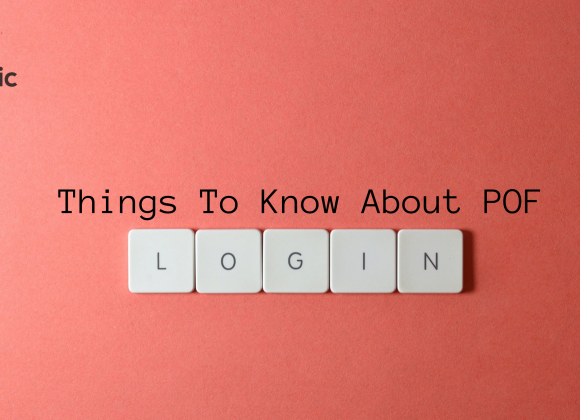Introduction
In the dynamic landscape of event planning, data integrity is paramount. This is where disaster recovery and backup solutions come into play, offering robust data protection and ensuring seamless continuity in the face of unforeseen circumstances. The application of cloud technology, such as Google Cloud and IBM Cloud, has revolutionized these backup and recovery processes. These platforms provide a safe haven for data backup and ensure quick and efficient data recovery, mitigating the risk of data loss. Key features such as incremental and differential backup and clear recovery point and time objectives make these solutions an integral part of any event platform. With the right backup software, such as Veeam Backup, your data is safe from threats like ransomware and always ready for recovery. Thus, the proper backup and recovery solution is vital for any event platform.
What Is The Backup And Recovery Of Data?
Data backup and recovery refer to the systematic process of storing copies of data in a safe and secure medium, ensuring that it can be retrieved in situations of data corruption, accidental deletion, or any form of data loss. The primary purpose of data backup is to enable data recovery following a disaster recovery scenario. A well-designed backup solution is integral to efficient data protection strategies, ensuring business continuity.
Backup and recovery solutions can be categorized into incremental backup and differential backup. Incremental backup refers to backing up only the data changes since the last backup. In contrast, the differential backup involves storing data changes since the previous full backup, thus requiring more storage space but providing quicker data recovery.
Incremental backup, being more space-efficient, is often favored when storage capacity is limited. This method saves only the changes made since the last backup, resulting in faster backup times and reduced storage requirements. On the other hand, differential backup, although requiring more storage space, offers a more straightforward restoration process. It allows for a quicker recovery by saving all changes made since the last full backup, eliminating the need to restore multiple incremental backups.
Importance Of Data Backup In Event Platforms
In the context of event platforms, where a considerable amount of data is generated continuously, it is essential to have a reliable backup solution. This becomes even more critical when considering the vast range of data involved, including attendee information, ticket data, and real-time event feedback. The success of an event heavily relies on data integrity, as even the slightest loss of such valuable information can have devastating consequences. Therefore, implementing a robust data protection strategy is paramount.
A comprehensive backup strategy ensures that all the necessary data is securely stored, minimizing the risk of data loss. By having redundant copies of the data stored in multiple locations or on different servers, the event platform can guarantee the availability and reliability of its data. This safeguards the information and ensures that the event organizers can seamlessly access and retrieve the data whenever needed.
Moreover, a well-designed backup solution considers the event platform’s scalability and growth. As the volume of data increases over time, the backup system must accommodate this growth without compromising its performance or reliability. This scalability factor ensures that the event platform can continue handling the data influx and maintaining its high data protection standards.
Role Of Cloud In Backup Solutions
Cloud technology, such as Google Cloud and IBM Cloud, has revolutionized backup solutions by providing a secure and reliable platform for storing data. With cloud storage, businesses can safeguard their valuable information against physical damage to servers, ensuring data integrity and availability.
Not only does cloud backup offer enhanced protection, but it also simplifies the data recovery process. Whether it’s a minor mishap or a major disaster, retrieving valuable data becomes effortless, as it can be accessed from any location and at any time. This level of accessibility and flexibility empowers businesses to resume operations swiftly and minimize downtime.
Moreover, cloud technology offers scalability, allowing businesses to seamlessly adjust their storage space according to their changing needs. With the ability to effortlessly increase or decrease storage capacity, organizations can effectively manage costs and optimize resource allocation. This flexibility eliminates the need for significant upfront investments in physical storage infrastructure, making cloud backup a cost-effective solution for event platforms and businesses of all sizes.
Recovery Solution: Ensuring Business Continuity
A recovery solution is an essential component of data protection, serving as a counterpart to a backup solution. It plays a crucial role in the process of restoring backed-up data in the event of data loss or corruption. By having a robust recovery solution in place, organizations can ensure the continuity of their operations and minimize any potential downtime.
When it comes to data recovery, two key metrics are considered: the Recovery Time Objective (RTO) and the Recovery Point Objective (RPO). The RTO refers to the maximum acceptable time it takes to recover data after an incident, while the RPO denotes the maximum tolerable amount of data loss that can occur during the recovery process.
Having a well-defined recovery solution with optimal RTO and RPO not only safeguards organizations against potential data disasters but also provides peace of mind, knowing that critical data can be quickly and accurately restored.
RTO is the maximum acceptable time that a system can be down after a failure or disaster before the losses become unacceptable. RPO, on the other hand, is the maximum acceptable amount of data loss measured in time. It identifies the point in time where the system needs to be restored to avoid unacceptable losses. These parameters are crucial for disaster recovery planning in event platforms.
Ransomware Recovery And The Role Of Backup Software
High-quality backup software, such as Veeam Backup, offers robust ransomware recovery solutions that are crucial for event platforms. In the unfortunate event of a ransomware attack, this software provides a vital layer of defense, enabling quick and efficient data recovery without the need to pay a ransom. By automating the backup process, Veeam Backup ensures that data is regularly updated and stored in the backup, allowing for the restoration of the most recent and accurate information.
In conclusion, a well-implemented backup and recovery solution plays a pivotal role in data protection and disaster recovery for event platforms. It not only ensures the integrity of data but also provides seamless business continuity and safeguards against potential cyber threats. With such comprehensive protection, event platforms can have peace of mind knowing that their valuable data is secure and that they can quickly recover from any unfortunate incidents.
Offsite Servers Vs. Independent Drives
In the realm of backup solutions, the choice between offsite servers and independent drives is crucial. Offsite servers, often cloud-based, offer increased security, scalability, and accessibility. With robust encryption protocols and redundant storage systems, data stored on these servers is protected from physical harm and unauthorized access. Additionally, they provide the convenience of remote access, allowing users to retrieve and modify their data from anywhere, at any time.
Furthermore, offsite servers offer seamless scalability as data volume increases. Whether it’s a rapidly growing event platform or a data-intensive project, cloud-based backup solutions can effortlessly accommodate expanding storage needs. This scalability eliminates the need to invest in additional hardware or worry about running out of storage space.
On the other hand, independent drives offer a more traditional method of data storage. They provide physical control and immediate access to data without the need for ongoing subscription costs. However, they come with their own set of limitations. Independent drives are susceptible to physical damage, theft, or loss, which can result in permanent data loss if not properly backed up. Moreover, the data recovery process can be time-consuming and complex, especially in catastrophic data loss situations.
In summary, while offsite servers offer enhanced security, scalability, and accessibility, independent drives provide a more traditional, cost-effective approach to data storage. Careful consideration of the specific requirements and priorities is essential in making the right choice for backup solutions. Therefore, the choice between the two depends on the specific needs and resources of an event platform.
Cloud Backup And Recovery
Cloud backup and recovery solutions have gained significant traction due to their multifaceted advantages. These solutions allow event platforms to automatically store their data offsite in a secure, remote server, ensuring data protection in cases of sudden data loss or corruption. The flexibility and accessibility of cloud backup technology enable users to restore their data quickly from anywhere, ensuring minimal downtime and smooth business continuity.
In addition, cloud backup and recovery solutions provide a highly scalable infrastructure that seamlessly caters to the growing demands of event platforms. As the volume of data continues to rise, these solutions effortlessly adapt to accommodate larger amounts of data, ensuring optimal performance and reliability. This remarkable flexibility in storage capacity not only meets the storage needs but also proves to be a cost-effective alternative, eliminating the necessity of upfront investment in physical storage infrastructure. With cloud backup and recovery solutions, organizations can confidently handle their data growth while focusing on their core business goals.
Moreover, cloud backup and recovery solutions play a crucial role in disaster recovery. By leveraging advanced technologies and robust infrastructure, these solutions enable organizations to define optimal Recovery Time Objectives (RTO) and Recovery Point Objectives (RPO). With this level of reliability and efficiency, event platforms can have peace of mind, knowing that their valuable data is secure, easily accessible, and readily recoverable at any given moment.
In conclusion, cloud backup and recovery solutions offer a robust and efficient approach to data protection. They ensure data integrity, promote business continuity, and provide scalable solutions that cater to the dynamic needs of event platforms.
Backup Vs. Recovery

Backup refers to the crucial process of creating a copy of data to protect against potential loss or corruption. This can encompass a wide range of data, from ticket sales information to attendee details, ensuring comprehensive protection for event platforms. On the other hand, recovery is the essential process of restoring that backup data in the event of any unforeseen loss, guaranteeing minimal downtime and uninterrupted business continuity.
To gauge the effectiveness of a recovery solution, two key metrics are often employed: the Recovery Time Objective (RTO) and the Recovery Point Objective (RPO). The RTO represents the maximum acceptable time to recover data after an incident, ensuring prompt restoration and minimizing any potential disruptions.
Implementing a robust backup and recovery solution not only ensures data integrity but also plays a pivotal role in maintaining seamless business operations within the event platform realm. With the ability to safeguard critical data and swiftly restore it when needed, event organizers can confidently deliver exceptional experiences while mitigating potential risks.
Types Of Data Backup
The most common ones include full backup, incremental backup, and differential backup. A full backup, as the name suggests, involves making a copy of all the data on a system. This type of backup offers the most comprehensive protection, but it also requires the most storage space and time to execute.
Incremental backups, on the other hand, only backup the changes made since the last backup, whether it was a full backup or an incremental backup. This method is more efficient in terms of storage and time resources, but the recovery process can be more complex and time-consuming as it involves restoring the last full backup and all subsequent incremental backups.
Differential backups strike a balance between the two. They backup all the changes since the last full backup, making the recovery process simpler than incremental backups, yet more efficient in terms of storage resources than full backups. The type of backup solution chosen should align with the organization’s needs considering factors such as storage resources, recovery time, and data volume. By understanding these backup types, event platforms can select a method that best ensures their data’s safety and accessibility.
Importance Of The Backup And Recovery Of Data
Data backup and recovery are essential elements of data protection strategies in event platforms. They safeguard valuable data, ensuring business continuity and operational efficiency. A backup solution creates a copy of the data, protecting against potential data loss or corruption. On the other hand, a recovery solution restores this data in case of any unforeseen issues, ensuring minimal downtime.
Key metrics such as Recovery Time Objective (RTO) and Recovery Point Objective (RPO) measure recovery solution effectiveness. RTO is the maximum time acceptable to recover data after an incident, while RPO indicates the maximum amount of data loss tolerable during recovery.
There are different types of data backup – full, incremental, and differential backup. Full backup copies all data but requires substantial storage and time. Incremental backups only cover changes since the last backup, being more efficient but complex in recovery. Differential backups backup changes since the last full backup, striking a balance between the two.
In essence, a robust backup and recovery solution aids in maintaining data integrity, upholding seamless business operations, and providing peace of mind for event platforms.
What Is Disaster Recovery Backup?
These disasters may range from natural calamities like floods or earthquakes to human-induced disasters such as cyberattacks, equipment failures, or even simple human error. The primary purpose of disaster recovery backup is to minimize downtime, avoid data loss, and ensure business continuity in the face of these potential risks.
Key Components Of Disaster Recovery Backup
A comprehensive disaster recovery backup involves several key components. Primarily, it includes a backup of all crucial data and applications. For an event platform, this could encompass everything from attendee details and ticket sales data to marketing material and financial information.
Secondly, a disaster recovery backup plan involves a well-defined recovery strategy. This strategy outlines the steps to be taken in the event of a disaster, including which data should be restored first, how it should be restored, and who is responsible for executing each part of the recovery process.
Lastly, regular testing and updating of the backup and recovery plan is an essential component of disaster recovery. This ensures that the backup is up to date and that the recovery process is effective and efficient when needed.
Significance Of Disaster Recovery Backup In Event Platforms
In the context of event platforms, a sound disaster recovery backup is vital. Especially in the current digital age, where cyber threats are rampant, having a robust disaster recovery backup is more crucial than ever. A ransomware attack, for instance, can cripple an organization’s operations, causing significant data loss and downtime. A disaster recovery backup, in such cases, can act as a safety net, allowing for the quick restoration of data and resumption of normal operations.
Challenges In Implementing Disaster Recovery Backup
Despite its significance, implementing a disaster recovery backup can pose several challenges. This includes the cost of storage, software, and potentially even a backup site.
Another challenge is ensuring that the backup process itself does not disrupt normal business operations. Backups often require significant resources and can slow down system performance, potentially disrupting daily workflow.
Moreover, ensuring that the backup data itself is secure and protected is another challenge. Backup data, if not adequately protected, can itself become a target for cyber threats, leading to a whole new set of problems.
Conclusion
In conclusion, disaster recovery backup is an essential component of data protection strategy in event platforms. It involves creating a copy of the data and systems, outlining a recovery strategy, and regularly testing and updating the backup. Considering its immense importance, investing in a reliable and effective backup and recovery solution is no longer an option, but a necessity, for event platforms.
The Importance Of Disaster Recovery (DR)
Disaster Recovery (DR) is an essential measure for event platforms, acting as a strong line of defense against data loss during unexpected mishaps. It involves the replication of critical data and application systems, enabling swift restoration after a disaster. Whether the disaster is a natural calamity, a human error, or a cyberattack, a robust DR plan effectively minimizes downtime and data loss, ensuring business continuity.
Key components of a DR plan include the backup of all essential data and applications, a well-structured recovery strategy, and regular testing and updating of the plan. For event platforms, the backup might include attendee details, financial information, and ticket sales data. The recovery strategy outlines the recovery process, including the order of data restoration and the responsible parties.
Implementing a DR plan can pose challenges, such as high costs and potential disruption to regular operations. Additionally, securing the backup data from cyber threats is a crucial consideration. Nevertheless, the benefits of a well-rounded DR plan significantly outweigh these challenges. Despite the costs and complexities, a robust DR plan is an investment into the long-term security and resilience of an organization, particularly in today’s digital era where cyber threats are increasingly prevalent.
In conclusion, a reliable DR plan underpins data protection strategy in event platforms. It gives event organizers the confidence to focus on delivering exceptional experiences, knowing that they have a contingency plan to ensure business continuity and data integrity even in the face of adversity.
Conclusion
In the dynamic world of event management, the safeguarding of data through robust backup, recovery, and disaster recovery (DR) solutions is crucial. These measures provide a safety net that protects against data loss, minimizing downtime, and ensuring business continuity, even in the face of unexpected setbacks. While implementing these strategies may pose challenges, such as cost and resource allocation, the promise of data integrity, operational resilience, and peace of mind makes it a worthy investment.
At Orderific, we specialize in providing state-of-the-art backup and recovery solutions tailored to your event platform needs. Take the step towards a more resilient future today. Reach out to us at Orderific to book a demo and explore how our solutions can provide the security your data deserves.
FAQs
Why are backup and recovery features important in event platforms?
They protect against data loss, ensure business continuity, and provide operational resilience in case of unexpected setbacks.
How frequently should event organizers perform data backups for optimal security?
Data backups should ideally be performed daily for optimal security.
Can backup and recovery features be customized based on event-specific needs?
Yes, most backup and recovery solutions offer customizable features to cater to event-specific needs.
What steps should be taken in the event of data loss to ensure effective recovery using platform features?
In case of data loss, immediately initiate the recovery process outlined in your disaster recovery plan.













